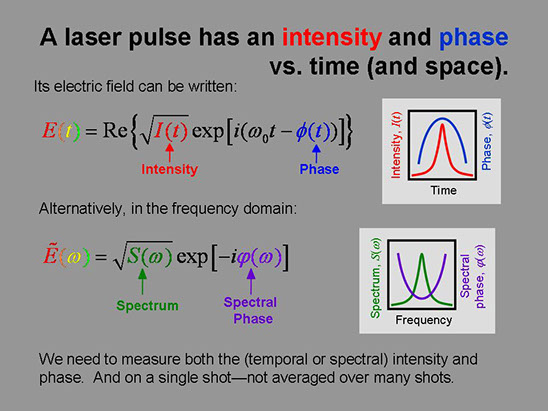Humankind has developed some very sophisticated light-measurement devices already--microscopes, telescopes, interferometers, and the cameras that record the resulting light patterns. What are the remaining challenges?
As mentioned in the overview, whether it's an ultrashort light pulse from a laser or a naturally occurring light beam, light usually contains variations on an ultrafast timescale (about 0.000000000001 seconds) or shorter. Yeah, that's fast. And that's where breakthroughs are needed.
But, first, what is it that we need to measure about light?
Since speed is the issue, we'll begin with measuring light's electric field vs. time (or frequency). And we'll only consider ultrashort laser pulses with simple shapes, not more complex light pulses. This is challenging enough that it wasn't until 1991 that we solved it. Later we'll discuss more complex pulses in time and finally spatio-temporal variations in which the electric field varies in space also.

